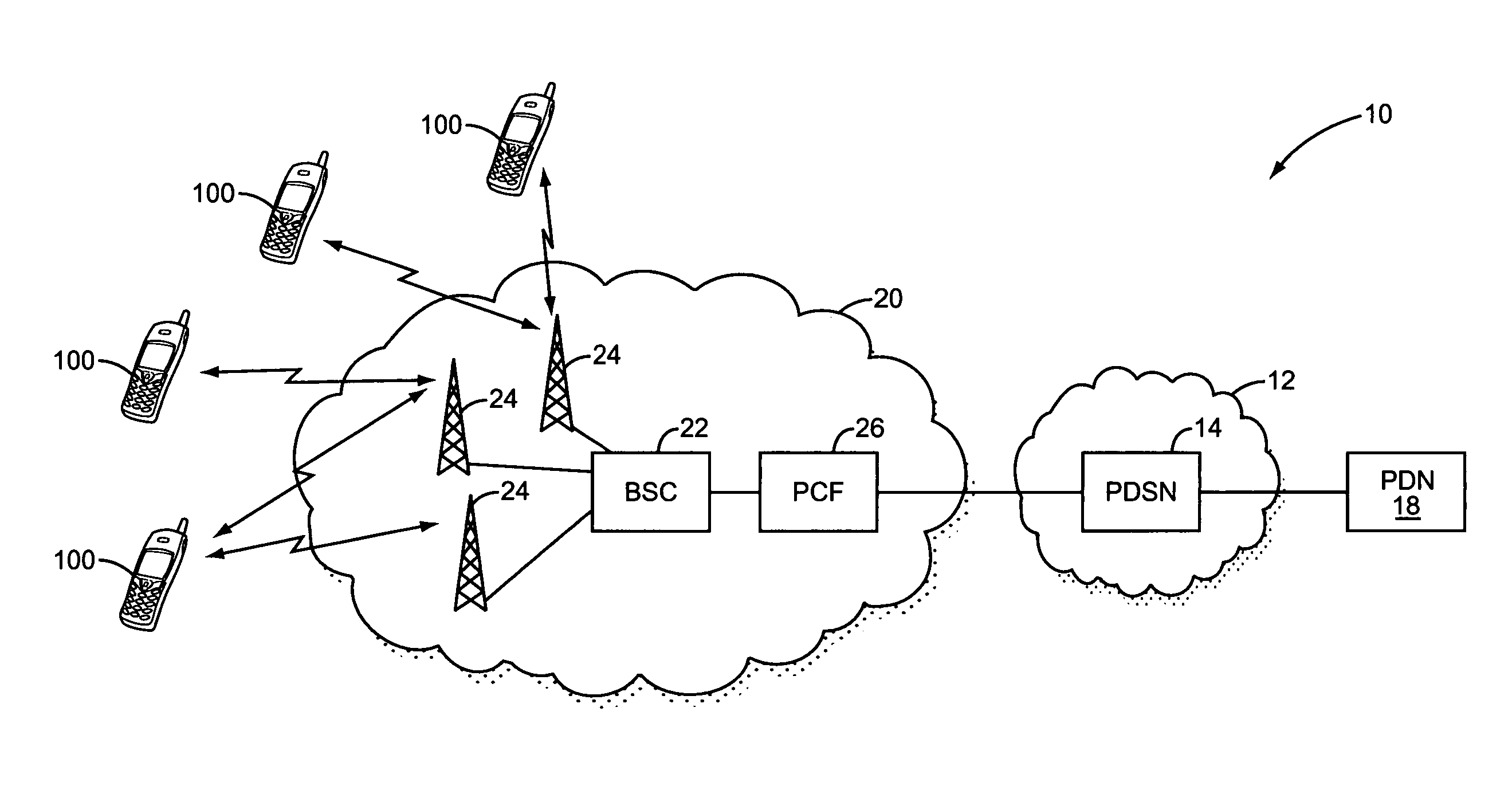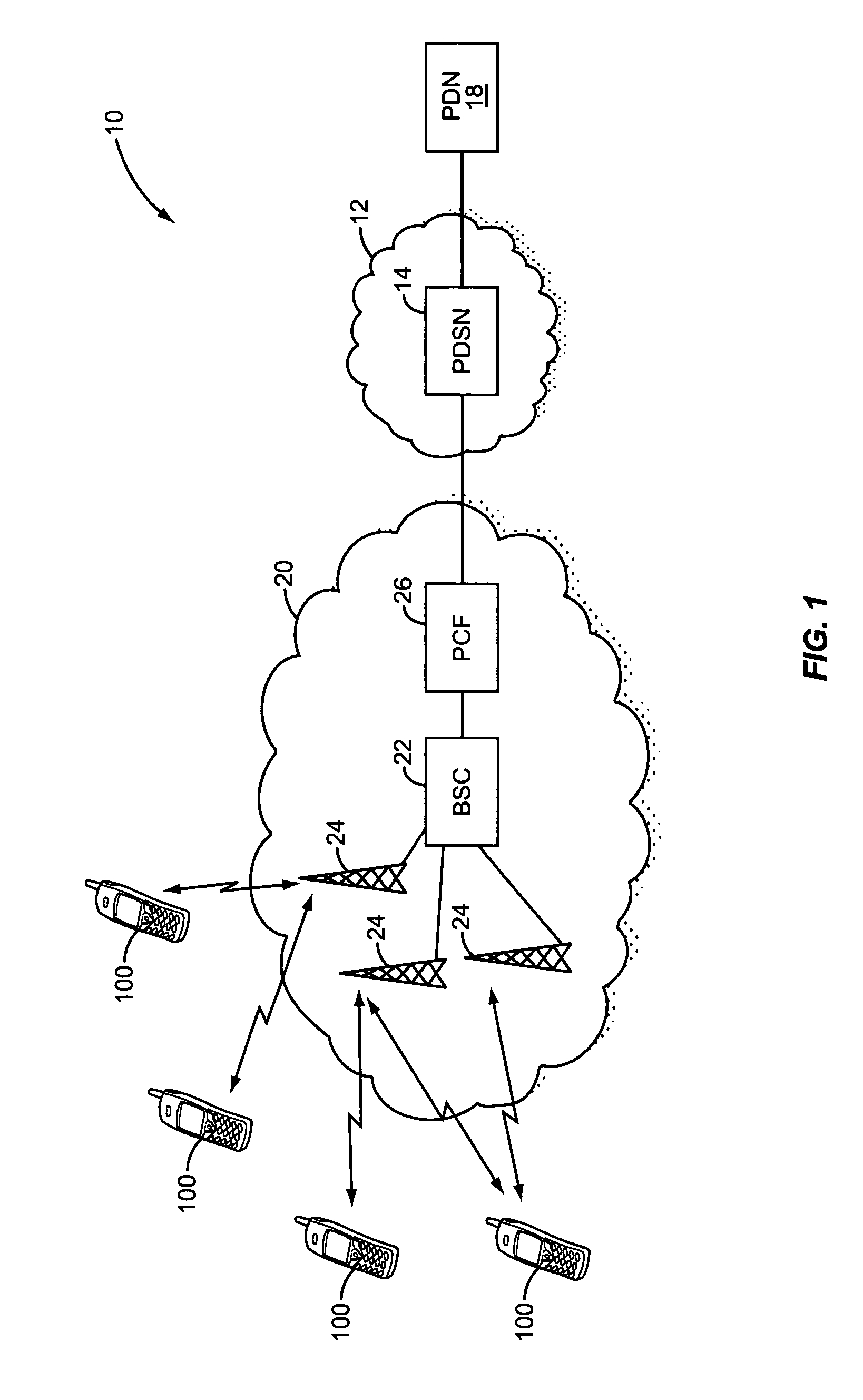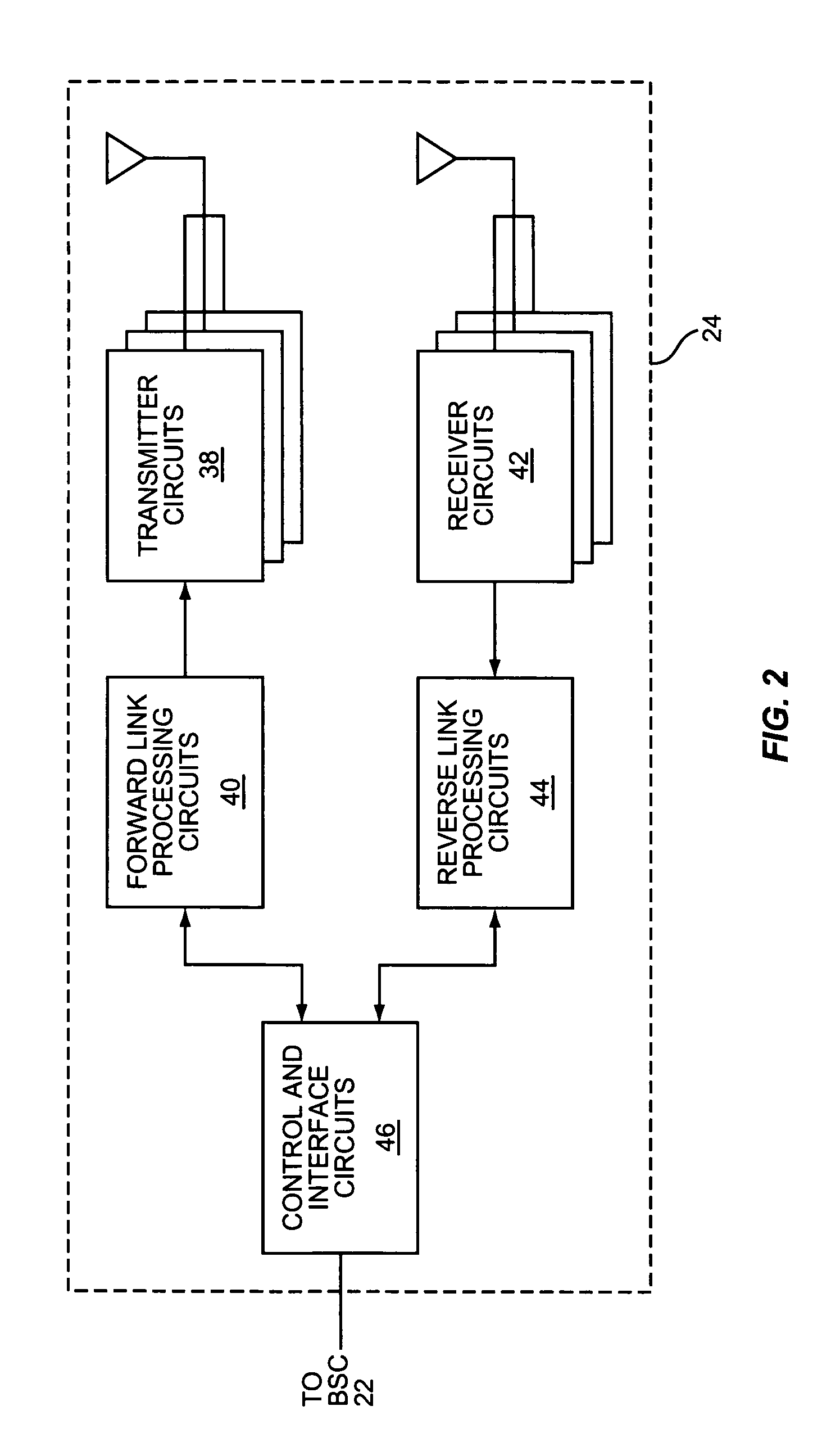Power control for reverse packet data channel in CDMA systems
a reverse packet data and power control technology, applied in power management, instruments, coding, etc., can solve the problems of fading sources in mobile radio systems that require much faster power control than fading sources, and the received strength of pilot signals at the base station would disrupt the inner loop power control mechanism,
- Summary
- Abstract
- Description
- Claims
- Application Information
AI Technical Summary
Benefits of technology
Problems solved by technology
Method used
Image
Examples
Embodiment Construction
[0022]Referring now to FIG. 1, the present invention will be discussed in the context of a wireless communications network 10. The present invention was originally developed for use in code division multiple access (CDMA) networks and therefore the discussion will focus on CDMA networks 10 based on the cdma2000 standard. The present invention is particularly useful in systems based on the 1×EVolution (1×EV) of the cdma2000 standard, which includes both the 1×EV-DO (Data Only) and 1×EV-DV (Data and Voice) standards. However, the present invention could be adapted and employed in systems using other communication standards, such as Wideband CDMA (WCDMA) and the Universal Mobile Telecommunications System (UMTS).
[0023]Network 10 comprises a packet-switched core network 12, including at least one packet data serving node (PDSN) 14, and one or more radio access networks (RANs) 20 operatively connected to the core network 12. Each RAN 20 comprises at least one packet control function (PCF)...
PUM
 Login to View More
Login to View More Abstract
Description
Claims
Application Information
 Login to View More
Login to View More - R&D
- Intellectual Property
- Life Sciences
- Materials
- Tech Scout
- Unparalleled Data Quality
- Higher Quality Content
- 60% Fewer Hallucinations
Browse by: Latest US Patents, China's latest patents, Technical Efficacy Thesaurus, Application Domain, Technology Topic, Popular Technical Reports.
© 2025 PatSnap. All rights reserved.Legal|Privacy policy|Modern Slavery Act Transparency Statement|Sitemap|About US| Contact US: help@patsnap.com



